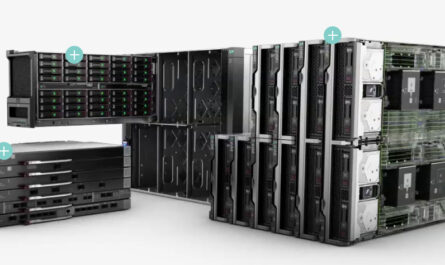The modern world has become increasingly connected through the ongoing digital transformation across various industries. From power grids and water treatment plants to manufacturing facilities and oil & gas pipelines, Operational Technology (Operational Technology ) systems that enable critical infrastructure are now networked like never before. While greater connectivity enables more efficient operations, it also exposes previously isolated Operational Technology environments to cyber threats on an unprecedented scale. As these systems transition online to integrate with IT networks and leverage modern technologies like IoT, cloud and AI, securing Operational Technology assumes paramount importance. This article explores some of the key challenges to Operational Technology security and recommends strategies to safeguard critical infrastructure from emerging threats.
The Expanding Attack Surface
As Operational Technology systems interconnect with each other as well as corporate IT networks and the public internet, the overall attack surface expands multi-fold. Legacy systems initially designed without security in mind are now potentially vulnerable to a wide variety of threats. Remote access capabilities introduced for troubleshooting and maintenance further amplify risks if not implemented securely. The integration of IT devices like programmable logic controllers (PLCs) and human-machine interfaces (HMIs) into cloud environments for data aggregation and analytics also creates new vectors for attacks. Operational Technology networks may lack modern security controls like firewalls, antivirus software, patch management and endpoint detection solutions found in IT. Attackers are actively exploiting these weaknesses to infiltrate critical infrastructure.
Evolving Threat Landscape
While industrial espionage and acts of terrorism have long threatened critical infrastructure, the new cyber domain presents unique challenges. State-sponsored hacking groups are increasingly targeting Operational Technology systems for surveillance and cyber warfare purposes. Ransomware gangs now view critical services as lucrative targets. Internal threats from disgruntled employees with system access are also a significant concern. Additionally, common IT threats are now crossing over to impact Operational Technology . Malware, phishing scams, credential theft and unpatched vulnerabilities endanger control systems. The adoption of consumer IoT, mobile and web-based technologies in industrial settings has introduced malware like Triton and Industroyer tailored to disrupt industrial processes. Defending robustly against these advanced and evolving threats requires a strategic overhaul of Operational Technology security practices.
Legacy Infrastructure Upgrade Challenge
A major hurdle to securing aging operational infrastructure lies in upgrading legacy systems and components approaching end-of-life. Systems running on obsolete operating systems or software are difficult to patch securely without disruptions. Hardware reaching its functional limits poses compatibility issues with newer security solutions. Organizations are caught between continuing critical operations on vulnerable legacy infrastructure and expensive replacements that introduce disruption risks. Standardization efforts are underway to develop more secure industrial communication protocols and component architecture. However, full-scale modernization will be an ongoing challenge given the massive scale and life cycles involved. Incremental upgrades combined with focused protection of legacy assets assume significance.
People and Process Aspect
Securing sprawling Operational Technology environments encompassing multiple facilities also necessitates addressing the human and process dimensions. Large portions of operational workforces may lack adequate cybersecurity awareness regarding best practices in environments with physical controls. Communication protocols may introduce vulnerabilities if authentication, authorization and accounting measures are not implemented properly between vendors, partners and remote access users. Configuration management processes need to control system modifications and limit credential sharing rigorously. Auditing controls help detect anomalies and insider threats. Response plans must factor the operational impact of isolating systems or taking them offline during incidents. Comprehensive security programs integrated across people, technology and processes are required to effectively safeguard complex operational setups.
Regulatory Compliance Burden
Rapid patches, frequent security updates and stringent monitoring cannot always be practically implemented atop critical infrastructure due to compliance and reliability mandates. Regulated industries operate under availability stipulations from authorities while ensuring safety, emissions control etc. This creates a dilemma versus demands for agility in security response. Organizations struggle to balance mandatory controls, documentation requirements from standards like NIST, NERC CIP etc with business needs. Complying with various frameworks across jurisdictions adds administrative overheads. Lack of clear responsible disclosure policies further challenge coordination between authorities and operators on incidents. Sector-specific guidelines addressing these regulatory challenges can help organizations prioritize risk-based protections.
Multi-Layered Security Approach
Given the diversity of legacy and modern Operational Technology assets, evolving threats and regulatory complexities – a holistic risk management approach is imperative. A multi-layered architecture combining network segmentation, role-based access controls, application control and log analytics helps create multiple barriers against intrusions and limit lateral movement. User behavior analytics and anomaly detection tools monitor for abnormal user and system behavior indicating comprise. Endpoint security solutions provide host-based protection for systems. Secure configuration baselines and continuous authentication for remote access gates entry. System image integrity monitoring detects changes. Disaster recovery and backups ensure continuity amid incidents and upgrades. Automation streamlines routine security tasks while centralized security management provides visibility and response coordination across geographies. A Defense-in-Depth methodology is key to resilient Operational Technology security posture.
As operational infrastructure networks become increasingly digital, cybersecurity needs to evolve from an afterthought to a business priority. While the challenges are many, a risk-based strategic approach combining people, process and technology delivers effective protection. Regulatory guidance, information sharing and joint responsibility between public and private sectors can further strengthen security. If addressed proactively through diligent security best practices, emerging threats to critical services infrastructure can be mitigated to ensure continued public welfare.
*Note:
1. Source: Coherent Market Insights, Public sources, Desk research
2. We have leveraged AI tools to mine information and compile it



